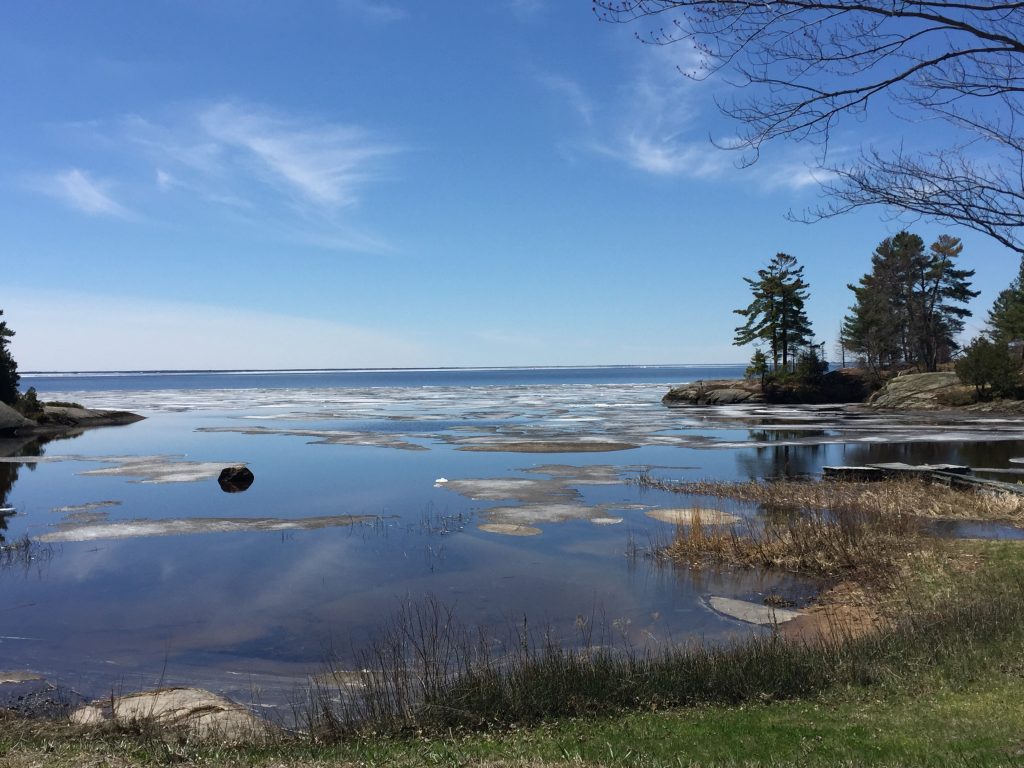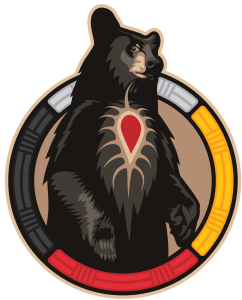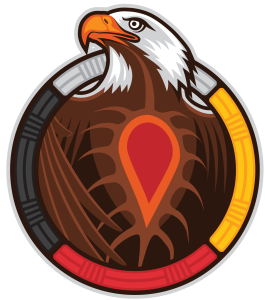
Aanin kina wiya! Hello everybody! Welcome to the micro-credential Wiidooktaadyang (We are helping one another) Promoting Health and Wellness in Anishinaabe Communities.
Course Overview
Developed in partnership with Nipissing First Nation, this highly interactive, self-directed, 3-module micro-credential aims to strengthen the capacity of any person interested in learning about strengths-based health and wellness from an Anishinaabe learning perspective. Though the micro-credential is steeped in the knowledge of Nbisiing Nishnaabeg (people of Nipissing First Nation), the experience and lessons learned can extend to working with many Anishinaabe communities. Grounded in the philosophy of wiidooktaadyang (we are helping one another), micro-credential helpers Mkwa (Bear), Ajijaak (Crane) and Migizi (Eagle) help learners to navigate the Four Directions Learning Cycle leading them to see, relate and reflect, understand, and act on each learning connection presented.
Four Directions Learning Cycle as Your Guide for Learning
Throughout this micro-credential your learning will move in a clockwise cycle where you gather knowledge in four directions. We refer to this as the Four Directions Learning Cycle which was adapted from the work of Bell (2014), and McLeod (2017):
- Beginning in the East, you will see initial experiences by watching videos and working through exercises relevant to each video
- In the South, you will relate and reflect on this new learning from your own experiences
- In the West, you begin to understand how the videos and your own experiences relate to existing theory and knowledge
- Moving to the North, you will act on and try out what you have learned by engaging with a learning scenario
To advance through the slides, click the arrow or progress bar at the bottom of the slide deck.
CONNECTIONS AND CHECKPOINTS
Using the Four Directions Learning Cycle as your guide, you will make several learning connections in each module. Connections are smaller units of learning, and each is marked by a checkpoint or short learning activity to check for understanding and to prove you’ve been there. The connections will build a foundation for your learning throughout this micro-credential.
MEET YOUR HELPERS AND LEARN ABOUT THE COURSE MODULES

Meet Mkwa (Bear) your helper and learning guide for Module 1
Module 1 begins with an understanding of why relationship is the starting point for working with Indigenous peoples. Learners will extend their understanding of relationship to the context of Indigenous health and how understanding the challenges begins with understanding another’s perspective. Learners develop further awareness of their own perspectives, they begin to see that other perspectives can create opportunities for working creatively to close gaps in the health sector.
 Meet Ajijaak (Crane) your helper and learning guide for Module 2
Meet Ajijaak (Crane) your helper and learning guide for Module 2
Module 2 explores the concept of cultural humility and the cultural safety continuum with respect to practice. Learners identify their social positions with respect to wellness. They begin to understand how personal beliefs and power can influence clients and explore practical ways to reducing bias and improve relationships.
 Meet Migizi (Eagle) your helper and learning guide for Module 3
Meet Migizi (Eagle) your helper and learning guide for Module 3
MEET GIMAA (CHIEF) OF NIPISSING FIRST NATION
Now, meet Gimaa (Chief) Scott McLeod who will welcome you to the Nipissing First Nation (NFN) Territory and this Micro-Credential.
Video Transcript: Welcome to NFN Territory [Doc]![]()
Situating Yourself on the Land
To give you a sense of where Nipissing First Nation is located, here is a map of our community:

Why this Course and Understanding Anishinaabe Wellness is Necessary
In 2015, the Truth and Reconciliation Commission of Canada recommended improvements in health care for Indigenous peoples and encouraged care providers to embrace traditional knowledges.
There is an emerging need for a new generation of care providers who understand how Indigenous knowledges concerning wellness can improve care.
Wiidooktaadyang is a Nbisiing Nishnaabe term meaning “we are helping one another” and it describes a philosophy of care developed by the people of Nipissing First Nation.
Our research team gathered the wellness knowledge shared by Nbisiing Debendaagziwaad through a CIHR-funded “Indigenous Approaches to Wellness Research” grant. Through conversations with Nbisiing Debendaagziwaad, we are applying the philosophy of Wiidooktaadyang and how these lessons have helped the community for years.
This three-module micro-credential aims to inform how Wiidooktaadyang can be an effective multi-sector model for all.
Who can benefit from this micro-credential?
This micro-credential can serve the needs and interests of:
- Post-secondary students and new graduates in the helping fields with an interest in working with Anishinaabe people and communities.
- Nipissing First Nation service providers interested in “upskilling” or learning more about Indigenous health and the Wiidooktaadyang Service Model.
- Anyone interested in learning about the health and wellness of Anishinaabe people and communities from a strengths-based perspective.
To move on, click on the “Next: Authors, Accessibility, and Funding →” button at the bottom right-hand corner of this page.
References
Bell, N. (2014, June 9). Teaching by the Medicine Wheel: An Anishinaabe framework for Indigenous education. EdCan Network. https://www.edcan.ca/articles/teaching-by-the-medicine-wheel/![]()
McLeod, S. (2017). Kolb’s learning styles and experiential learning cycle. Simply Psychology. Kolb’s Learning Styles and Experiential Learning Cycle. https://www.simplypsychology.org/learning-kolb.html![]()

